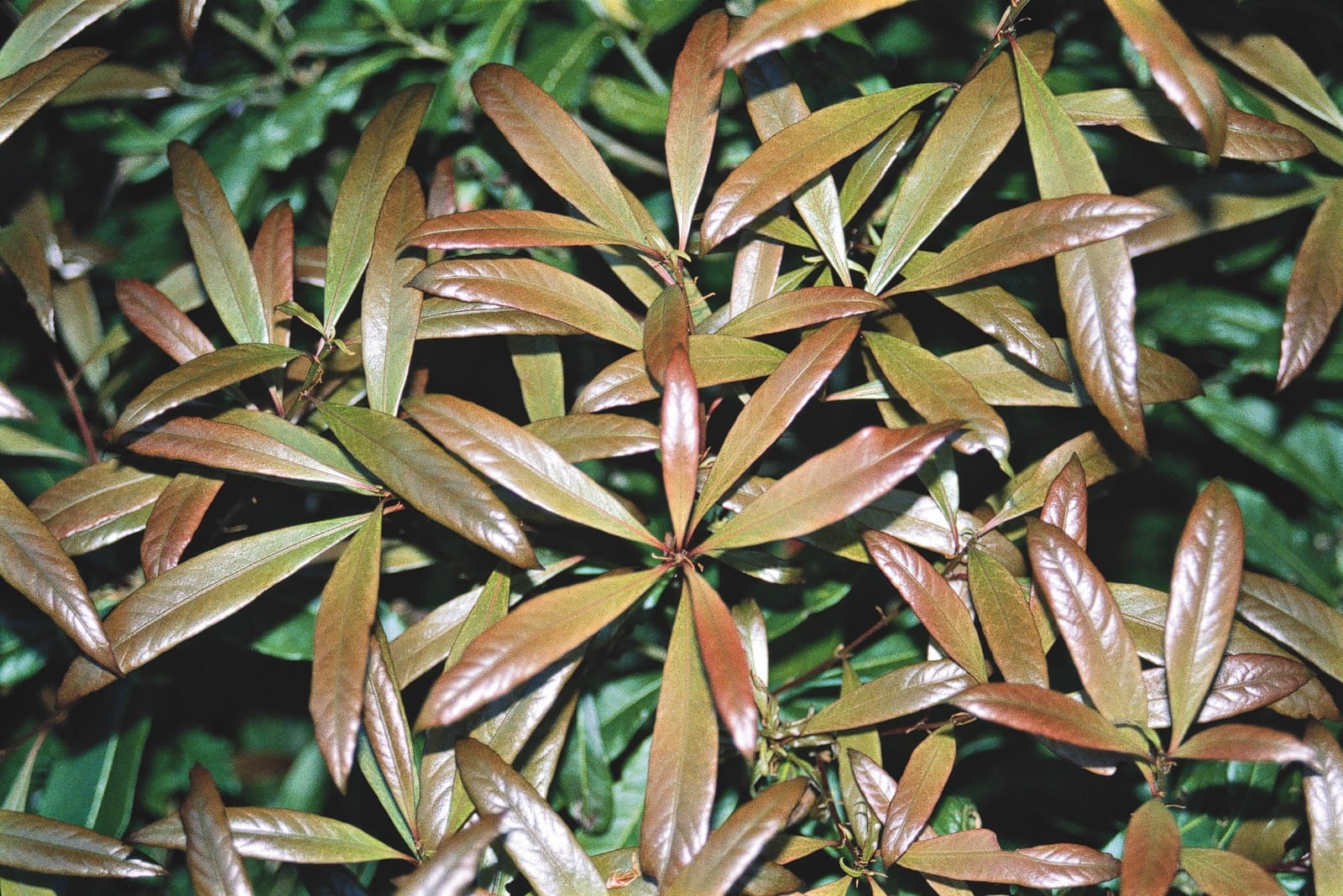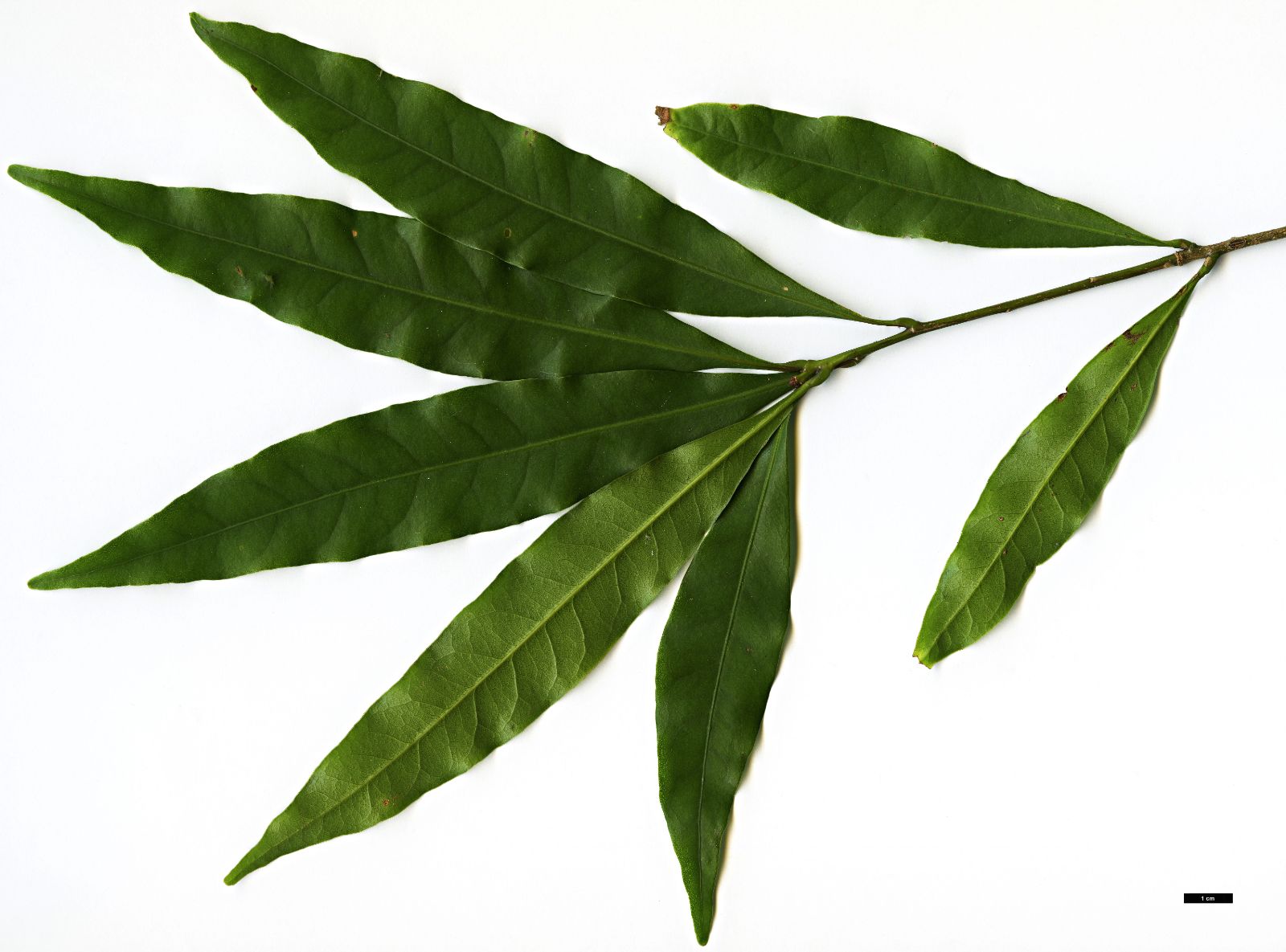Lithocarpus hancei
Credits
Article from New Trees by John Grimshaw & Ross Bayton
Recommended citation
'Lithocarpus hancei' from the website Trees and Shrubs Online (treesandshrubsonline.
Genus
Tree to 15 m. Branchlets grey to pale brown, somewhat waxy. Leaves thin and papery to rigid and leathery, 5–10 × 2.5–5 cm, shape extremely variable, ovate to elliptic to lanceolate, both surfaces glabrous, concolorous, upper surfaces occasionally farinose, 6–13 secondary veins on each side of the midrib, margins entire, apex variable; petiole 0.5–4 cm long. Monoecious. Male inflorescences paniculate, to 10 cm long, often with female flowers towards base. Female inflorescences congested with two to many rachillae. Cupules shallowly bowl-shaped, 0.3–0.7 × 1–2 cm diameter, covered with triangular, imbricate bracts in ± concentric rings. Nut depressed globose or conical with a rounded apex. Flowering July to August, fruiting August to November of following year (China). Huang et al. 1999. Distribution CHINA: Fujian, Guangdong, Guizhou, Hainan, Hubei, Hunan, Jiangxi, Sichuan, Yunnan, Zhejiang; TAIWAN. Habitat Occurs in a variety of habitats across its range, though usually below 2600 m asl. USDA Hardiness Zone 8. Conservation status Not evaluated. Illustration Huang et al. 1999; NT463. Taxonomic note The wide range of this species has led to a number of variants being given specific names, but these have all been reduced to synonymy (Govaerts & Frodin 1998).
Lithocarpus hancei is very rare in cultivation, but is represented by both old and young specimens. There are two plants at the David C. Lam Asian Garden, 2 m high in 2007 and growing vigorously. These came from wild collections made by the Taiwanese Research Institute in 1998, and were planted out in the garden in 2002. Peter Wharton (pers. comm. 2007) described the species in glowing terms: ‘The young shoots and unfurling leaves are suffused a brilliant lipstick red in early May, contrasting wonderfully well with their dark green, tapered leaves. A magnificent plant – imagine a mature tree, joining other Lithocarpus and Castanopsis painting whole hillsides orange, yellow, cream, purple and red as the monsoon descends on these rich broadleaved evergreen forests of southeastern China and Taiwan.’ Owen Johnson (2007) has recently identified trees of L. hancei at Caerhays, Cornwall, up to 9 m tall (28 cm dbh), and there are young seedlings in some British collections.








